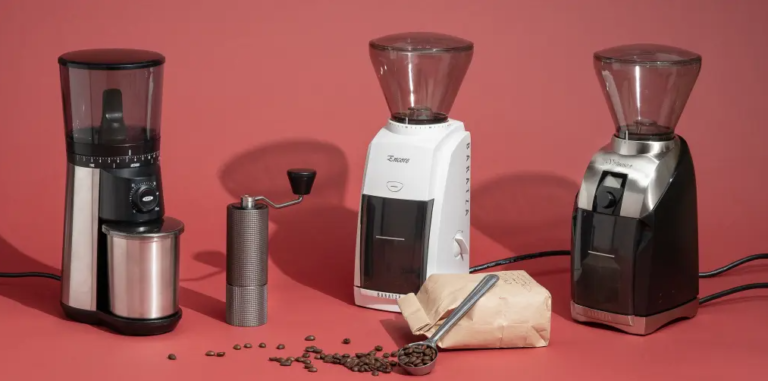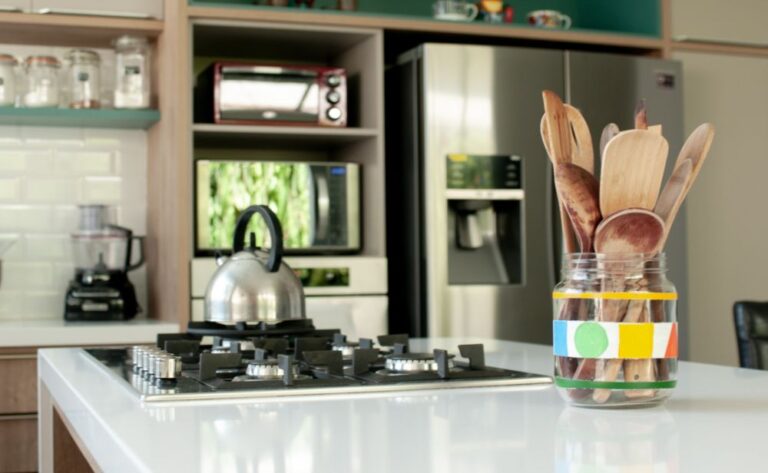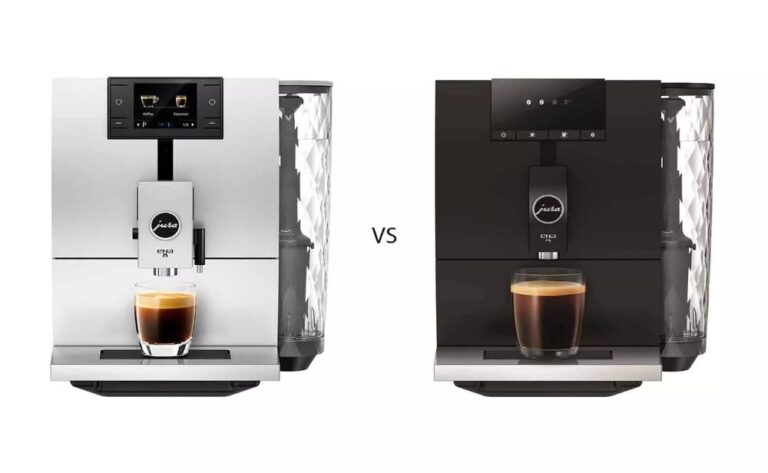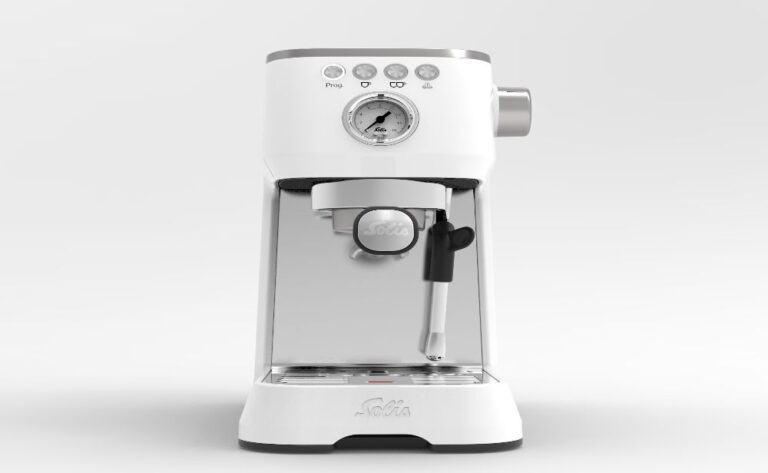
Since I’ve gotten it a couple of months ago, I’ve been making use of the Breville Bambino Plus each and every day.
During that time period, I gave it everything I had, from ultra-modern espresso blends from the Nordic countries to oily Italian espresso roasts and blends.
One thing is for sure: you should not undervalue the capabilities of this apparatus. Despite the fact that it appears to be innocent, it can pull amazing shots.
In this review, I will go over all of the specifics, compare it to some of its primary competitors in the entry-level market, and eventually tell you who I believe should purchase this device.
IN REGARDS TO BREVILLE/SAGE
Breville is among the most well-known names in the home espresso machine manufacturing industry.
The Australian company that manufactures kitchen appliances has a special place in the market for coffee-related goods.
While some coffee connoisseurs have a tendency to make fun of the brand’s machines, others (including real espresso geeks) are ardent advocates of the company. For example, the Breville Dual Boiler has something of a cult-like following and is considered by some to be the best non-commercial espresso machine in terms of value.
Old Italian Brands are known for making devices that are both robust and aesthetically stunning, which is something that we can all agree on.
On the other hand, espresso machines made by Breville are unique. The organization has gone in a different direction. Some people have the opinion that they produce home appliances, in contrast to the Italian brands, which produce machines.
Breville prefers to manufacture products with a more contemporary design that incorporates some lightweight plastic parts rather than producing things that are heavy-duty and made with tons of steel.
You have little illuminated buttons similar to those found on a blender or microwave rather than heavy-duty rocker buttons and switches. These buttons would not appear out of place on either of those appliances.
Another factor that contributes to the negative connotation that is sometimes attached to the Breville brand is the fact that its products are, for the most part, not easy to fix. Breville does not significantly contribute to the resolution of the issue. The website frequently runs out of available replacement parts, and the costs associated with repairs are somewhat steep. They will typically not even make an attempt to repair the product, but instead will simply replace it with a whole new one.
If you only consider the most obvious aspects of the situation, it would seem reasonable to draw the conclusion that older heritage companies often make higher-quality espresso machines. Not only with regard to the quality of the construction, but also with regard to the functionality.
This is not even close to being true.
Because it does not adhere to the same design standards as other manufacturers, Breville is able to incorporate more advanced technology into its products. And it’s not just a bunch of marketing ploys like that at all. For instance, the Breville Bambino Plus is equipped with a programmed temperature control (PID) and a preinfusion feature, both of which are typically reserved for significantly more expensive machines. These are the characteristics that, in day-to-day living, genuinely make a difference.
Additionally, Breville’s Bambino utilizes a technique that the company refers to as “thermo jet.” It might sound a little bit like a jargon, but it’s actually a very fascinating technology where metal is coated with a glass-ceramic enamel that enables for extremely rapid heating. This indicates that the instrument does not take more than three seconds to reach the desired temperature. In comparison, classic espresso makers often require anywhere from 10 to 30 minutes for the extraction process.
A blazingly quick warmup time is one of those things that truly contributes to a significantly improved overall user experience.
On the other hand, it appears that the junior edition is currently only made available in a small number of nations at this time. Because it is also quite typical to see price reductions for the Plus version, it’s possible that the money you save by purchasing the basic model won’t amount to much in the end.
DESIGN
When Breville originally introduced this espresso machine, I didn’t give it much thought because I thought it wouldn’t be very good. But over time, I’ve come to appreciate it more. It’s possible that this is because I purchased the truffle black variant rather than the usual chrome one.
It has a friendlier and more alluring appearance when compared to other machines at the entry-level, and it doesn’t look out of place or take up much space in your kitchen like other machines do. It is an extremely lightweight espresso machine, in addition to being quite small and compact in size. Even when contrasted with other things, such as a Gaggia Classic Pro.
In day-to-day use, I find that most of the little details, such as:
• The water tank is a really attractive feature. It is simple to remove and replace in its original location. When you reconnect the lid, it gives off an impression of being quite secure and robust.
Although using the buttons is rather simple and straight-forward, some people may find themselves missing the tactile input that comes from a large rocker-style switch or steam knob.
• In order to compensate for the lack of a display, the buttons will also attempt to convey information to you. For instance, when it is time to perform a cleaning cycle or descale, distinct patterns of flashing will occur on the buttons. The buttons will become less visible if there is insufficient water in the tank.
Additionally, there are other modes and features that may be accessible by pressing and holding a variety of different button combinations. Overall, it is more sophisticated than some of the other entry-level machines; nevertheless, if you are able to use a smartphone or a personal computer, I find it hard to believe that this would be an issue for you.
Additional items to take note of:
• It is difficult to properly secure the portafilter into position for some unknown reason. Because the machine is so lightweight, you have to make sure that it does not move when you are putting the portafilter in. In addition to that, this is something that I have noticed a number of reviews commenting on. Having said that, the fact that I was able to utilize a bottomless 54 mm portafilter manufactured by a third party without any issues is very puzzling.
• Because there is a considerable amount of space between the group head and the drip tray, a large scale such as the Timemore Black Mirror can be used.
• The steam wand does not have the ability to swivel to either of the sides, however this is something that is simple to get used to.
• Because the drip tray is only a few inches deep, it will virtually constantly require emptying.
HOW WOULD YOU DESCRIBE THE FLAVOR OF THE ESPRESSO?
How exactly does this device function in day-to-day life? I feel obligated to point out that, considering what it is, it is performing exceptionally well.
The temperature used for brewing is kept extremely consistent thanks to the PID. In light of this, you may anticipate a great deal more consistency with this machine in comparison to others, such as the Gaggia Classic or the Rancilio Silvia.
In addition to that, there is the preinfusion, as well as the 54 mm portafilter, both of which appear to contribute to the consistency.
It would appear that all of these factors operate in concert to make it much simpler to take quality photographs.
During the majority of my testing, I made use of a bottomless portafilter, and I encountered very few issues with channeling or spraying as a result.
In general, I was able to consistently achieve the outcomes that I had anticipated each time I brewed.
In my perspective, the dispersion screen and brew pressure are also pretty strong out of the box.
The droplets are dispersed around the screen in a fairly uniform fashion, and it seems like Breville has nailed it with the 9 bars. Contrary to what some people would think, more is not better when it comes to pressure.
I utilized a wide range of beans and could obtain good results across most of them. The two lightest were blends from The Coffee Collective and Gardelli, and both tasted sweet, crisp, and balanced — exactly way you’d want them to. These aren’t precisely light roasts, but nevertheless they are what I would consider “modern” medium roasts.
I experimented with the manual preinfusion, which appeared to mute the acidity and bring forth more sweetness. The manual preinfusion is pretty easy to use: just hold the shoot button in for the necessary time, and the puck will only be barely wetted.
However, as far as I can determine, the maximum duration you can do it is 10 seconds before the pump kicks in at 9 bars. It would be wonderful to have the option to run preinfusion for even longer.
I also tried to brew darker espresso blends and different burnt roasts from Starbucks, and as expected, the machine handled those without any difficulties at all.
If you fantasize about brewing incredibly light omni-roasts from Scandinavia, then this is probably not the machine for you. You’d need a bit more temperature control and longer preinfusion for that. However, from medium to dark you will obtain good results.
HE GRINDER the grinder constitutes the second component of the equation.
If you want the very best results, it goes without saying that you need a high-quality espresso grinder and not just a regular coffee grinder. I am aware that many people will give up on this machine too soon than they should because they are combining it with a grinder that is not of high quality. Excellent outcomes occurred when I utilized 1zpresso JE, Comandante C40, and Eureka Mignon Specialita. Therefore, you require something on that level in order to properly appreciate the gadget.
I have to confess that, all things considered, I was quite impressed with this chubby little fellow. Right out of the box, it’s light years ahead of the competition. When using a machine such as the Gaggia Classic Pro, you could occasionally obtain a wonderful shot, but when using the Bambino Plus, getting a fantastic shot is the norm rather than the exception.
THE STEAMING OF MILK
Automatic milk foaming is one of the unique features offered by the Breville Bambino Plus. It is also one of the machine’s specific functionalities. I can’t say that this is a feature that appeals to me because I’m more of a man who likes a direct dose of espresso, but for the sake of the readers, I had to try it out and see how it works.
I was rather aback, but it really does function very admirably. I discovered that using the setting for the intermediate temperature in conjunction with the setting for the lowest amount of foam created something that was suitable for a cappuccino or a slightly rowdy latte.
The milk doesn’t quite get the glossy wet-paint texture that genuine latte art milk would have, but with a little bit of grooming (knocking the pitcher against the counter and whirling), you can get rid of the larger bubbles and get something that’s acceptable enough for a heart or tulip design.
The manual steaming mode is another option that is always available to you. The steam is surprisingly potent for such a compact equipment, and you should be able to achieve the desired consistency in a reasonable amount of time. Because it is not possible to rotate the steam wand, this feature may irritate certain users. On the other hand, it projects quite a distance, which provides a favorable angle for the formation of a vortex.
The fact that the steam wand has an auto-purge feature, which, once again, could be considered as a disadvantage if you’re used to a more traditional machine, is something that I personally don’t mind because I tend to forget things. In the long run, it will be helpful in maintaining the perfect condition of the steam wand tip.
WHO IS IT DIRECTED AT?
Now that we’ve got that out of the way, let’s talk a little bit about the people who are going to be using this equipment. It shouldn’t come as much of a surprise that the person operating this equipment probably has no prior experience.
Because the milk is steamed and purged automatically, there is significantly less room for error than there would be otherwise. The same may be said for the fact that it incorporates reminders for descaling and cleaning into its design. In addition, you won’t be able to use the device if there is no water in the tank.
It would appear that Breville has observed enough careless customers, and as a result, the company has chosen to design a device that cannot be damaged by accident. Both in terms of the preparation of the coffee and the upkeep of the machine.
I haven’t mentioned it before, but you also have the choice of brewing with the automatic volumetric function. That’s another alternative.
You have a lot of leeway to play around with because you may choose between a single shot and a double shot button. For instance, you could configure the single shot button to dispense approximately 40 milliliters, while the other button could be set to dispense a lungo-sized portion of coffee. That is entirely up to you to decide.
This function performs fairly well overall. Shots typically range from 2 grams to 2 grams plus or minus.
There will be some variation in the final product that depends on the grind size, bean density, and amount of pressure used to tamp the grounds.
While I was putting the volumetric function through its paces, I couldn’t help but think about how simple it would be to get rid of the scale, set the machine to automatically froth some milk, and have a cappuccino without having to worry about the minute details.
I’m not really that person, but if you are, the Bambino Plus is an incredible piece of equipment for you to have. However, despite the fact that it is not significantly more difficult to use than a superautomatic, the tastes are significantly improved.
Having said that, I must admit that I had a good time using the gadget. Therefore, I do not believe that it is solely a machine for individuals who are not interested in espresso. You only need to purchase a basket with a single wall (if one is not already included; nevertheless, this is the case when the machine is purchased in Europe), and you will be able to make excellent shots. Coffee connoisseurs don’t seem like the type of individuals who wouldn’t enjoy themselves with anything like this.
• If you already own a Gaggia or Silvia that has been modified and pimped out, then you should probably consider upgrading to a machine that is both more powerful and more impressive.
• If you are coming from a lever-device like the Flair and want a semi-automatic to explore milk drinks and a more traditional workflow, then it would make sense to add this to your brew bar. This would be an excellent addition.
• Whether you already have an inexpensive Delonghi entry-level model or a super-automatic model, upgrading to this gadget will result in far better coffee.
BREVILLE BAMBINO VS GAGGIA CLASSIC
If you have the choice between a modern espresso machine like the Bambino Plus and an older Italian single boiler model like the Gaggia Classic Pro that hasn’t been updated in terms of its features since the 1990s, I believe that most normal people should go with the more current model. Simply put, it is far more consistent, and it does not call for any modification or difficult temperature surfing.
People who are looking for an easy cappuccino, not a new pastime, are the target audience for the Bambino Plus.
On the other hand, if you are interested in picking up a new pastime, you might be able to coax somewhat better shots out of the Gaggia. However, this will call for the OPV to be adjusted to 9 bars (which essentially involves unscrewing the top of the machine and modifying an internal component) in addition to a significant amount of practice time.
One analogy that comes to mind is the difference between driving a car with a contemporary automatic transmission and one with an outdated stick shift.
DOWNSIDES
Now that I have praised the Breville Bambino Plus for its many positive qualities, you might be wondering whether or not it has any drawbacks. Yes, without a doubt.
• Filter Baskets It’s a bummer that the product doesn’t come with a wall basket of any kind in the US by default, and that’s a real shame. Single-wall baskets are included in the version that I purchased, which was sold in Europe under the brand name “Sage.”
• Portafilter: The portafilter that comes with the machine has a somewhat flimsy feel to it. It’s also strange that it doesn’t have much room to move around in the group head. Why is my third-party portafilter so much simpler to put into place than the original one? It is my belief that the portafilter removed from an older model of Barista Express would be a better fit than the one included in the box.
• The Bambino does not have a temperature control system. If they had included a temperature control system in the Bambino, it would have been even more impressive.
• The small drip tray fills up very rapidly, and water will start dripping out of the rear of it before you even realize it’s happening.
• The fact that it is a Breville product is, unfortunately, going to be a deal breaker for several consumers. This indicates that you are unable to repair the gadget on your own. Having said that, I believe that this is actually pretty frequent among electrical goods that fall inside this price range. It works the same way with a microwave or a television with a flat screen. If there is a problem with the product while it is still covered by the warranty, you can return it back to the shop, and in all likelihood, they will provide you with a replacement. You are welcome to disagree with that philosophy; nevertheless, we ask that you maintain some level of coherence and not make any exceptions for espresso machines.
CONCLUSION
The Breville Bambino Plus, as a whole, managed to impress me and exceed my expectations.
When it was first announced, my first idea was that it would be an entry-level espresso machine with a concentration on making cappuccinos. Even if it is possible to be just that, there is a great deal more to it.
To tell you the truth, in my opinion, the new low-cost semi-automatic espresso machine is the one that other brands need to compete with.
It’s possible that some people will still be interested in purchasing an Italian single boiler as their first machine, but if they just want a consistently pleasant user experience, they should look in this direction instead.
This machine is ready to use in three seconds, and there is no delay between the brewing and steaming processes. It is not necessary to cleanse the water and check the temperature. You need only concentrate on brewing delicious coffee.
If you are deciding between this machine and another one of Breville’s machines that has a built-in grinder, I would strongly recommend that you go with the Bambino instead of the other machine. If you buy this machine and invest in a good coffee grinder, you’ll be able to brew incredibly flavorful coffee right in your own kitchen.





